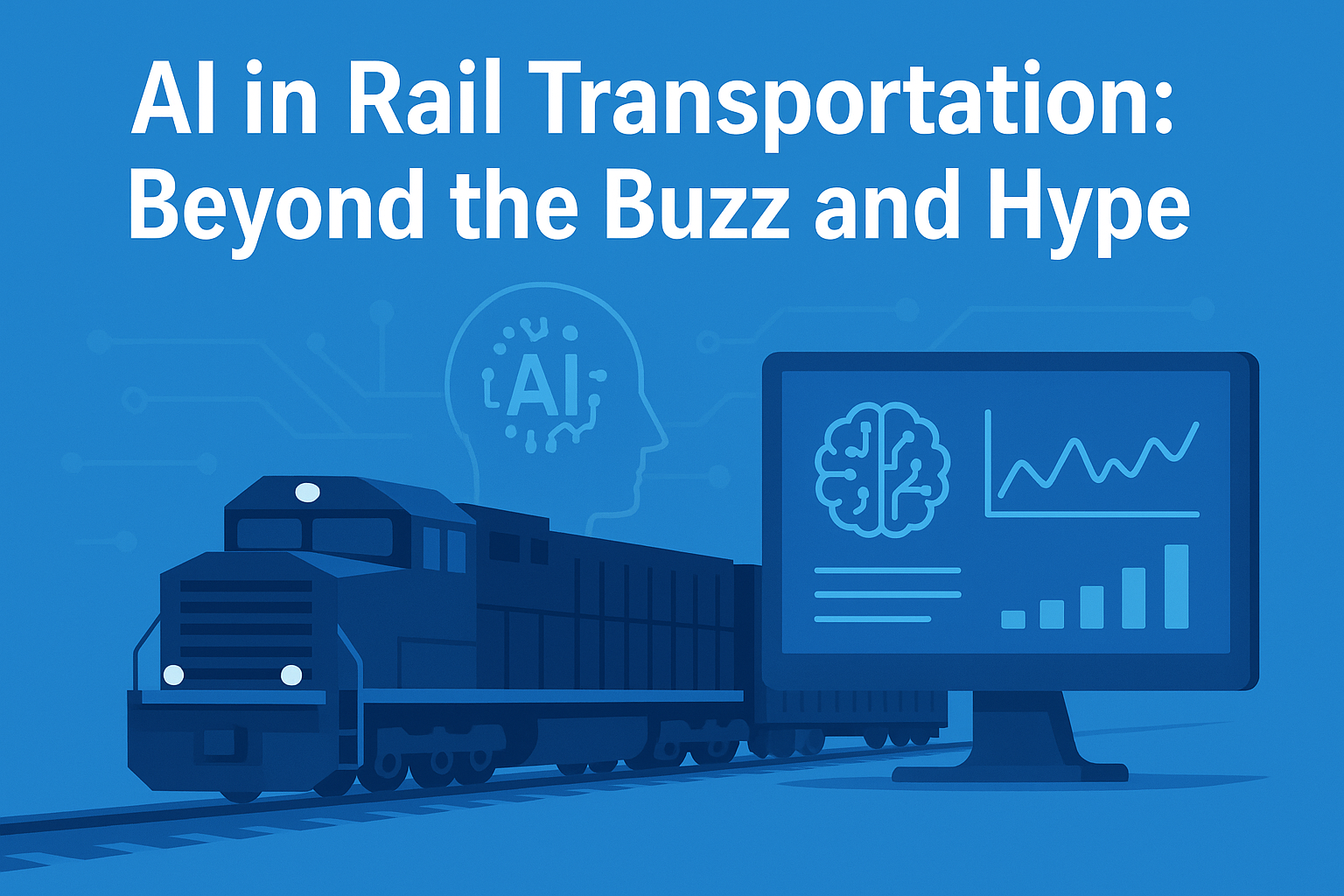Artificial intelligence (AI) in rail transportation is one of the industry’s most talked-about topics. Conference stages echo with promises of autonomous trains, predictive maintenance that eliminates service disruptions, and algorithms that remove bottlenecks. From glossy vendor videos to white-paper visions, AI is often presented as a transformative tool for efficiency, safety, and customer service.
It’s an appealing idea. Rail networks are data-rich, asset-intensive, and operationally complex. In theory, this makes them ideal for AI’s pattern recognition and decision-support capabilities. Under pressure to do more with less, operators are understandably drawn to technology that could boost capacity and cut maintenance costs without major infrastructure spending.
Yet beneath the marketing lies a harder truth: AI in rail transportation has struggled to move from small pilot projects to large-scale, system-wide impact. Technical, operational, financial, and cultural challenges continue to hold it back.
The Seduction of AI in Rail Transportation
The appeal of AI in rail often rests on four promises:
- Predictive maintenance to spot failing components early and prevent costly disruptions.
- Autonomous or semi-autonomous operations to improve safety, precision, and throughput.
- Optimized scheduling and capacity management to squeeze more from existing infrastructure.
- Enhanced customer experience through real-time updates, dynamic pricing, and personalized communication.
These ideas are not entirely speculative. Pilot projects and research show technical feasibility in controlled environments. McKinsey & Company has identified more than 20 active AI use cases in global rail, from track geometry analysis to crew rostering.
However, feasibility is not the same as readiness. Moving from lab trials to live operations is a much bigger leap.
Data Challenges: The Invisible Bottleneck
One of the most persistent claims in AI marketing is that “rail has the data.” While true in terms of volume, raw data is rarely AI-ready. To train reliable models, data must be:
- Widely available, not siloed in outdated systems
- Cleaned of errors and duplicates
- Labeled with accurate event details
- Time-aligned across multiple sensor streams
- Linked to assets with consistent identifiers
- Complete and representative across operating conditions
Bridging decades-old operational technology (OT) with modern IT systems is a major task. Many AI pilots underestimate this data-engineering phase, leading to models that can’t be scaled or validated. Industry reviews often cite poor data readiness as the top reason AI projects stall.
Integrating with Legacy Rail Systems
Unlike greenfield digital sectors, rail infrastructure is long-lived and capital-intensive. Signaling and control systems can stay in service for decades, often with custom configurations. On some networks, multiple railroads control different data feeds, creating a patchwork environment.
Introducing AI into safety-critical operations is never “plug-and-play.” It typically involves:
- Safety case development
- Extensive simulation and lab testing
- Shadow running in live conditions
- Regulatory approval from national authorities
An relatively recent example we’ve seen is the multi-year implementation of Positive Train Control (PTC) across U.S. freight and passenger railroads. While not an AI system, PTC faced similar integration hurdles: merging new digital control software with a wide variety of legacy signaling systems, locomotive hardware, and communication protocols. The project required billions in investment, years of testing, and coordination across dozens of rail operators. AI deployments that touch train control or operational safety will face comparable complexity and timelines.
Predictive Maintenance: A Reality Check
Predictive maintenance is the flagship AI use case for rail. The concept is straightforward: use sensors and machine learning to detect early signs of component failure and act before it happens.
In reality, several factors make this difficult:
- Failures are rare, limiting the data available to train models
- Assets age differently, so patterns from one railcar type may not apply to another
- Seasonal changes and route profiles alter sensor readings
- False positives waste resources and disrupt service
Many models perform well in research but degrade in live environments unless continuously updated with new, high-quality data.
The ROI and Financial Hurdles
AI projects require significant investment in:
- Sensor retrofits or upgrades
- Edge computing and networking infrastructure
- Skilled data engineers and analysts
- Change-management programs to adapt workflows
In a cautious industry, major spending must be backed by a clear return on investment (ROI). This often conflicts with the speculative, “moonshot” tone of some vendor pitches.
Safety, Regulation, and Liability Concerns
Safety is central to rail operations. Any AI influencing signaling, braking, or dispatch enters the safety-critical domain and faces the highest regulatory standards. Current frameworks for certifying AI in these roles are immature. Questions about liability in human–AI collaboration remain unresolved.
Until these issues are addressed, most operators will keep AI in advisory roles rather than fully automated decision-making.
The Marketing Gap
There is often a mismatch between vendor marketing cycles and operational timelines. Vendors announce pilots and “world-first” deployments, while operators gain valuable insights—but scaling these solutions across an entire network is slow and expensive.
This gap can lead to inflated expectations and disappointment when promised benefits fail to appear at scale.
Where AI in Rail Transportation Works Today
Despite the challenges, AI can deliver real value today when applied pragmatically:
- Asset analytics to help inspectors and technicians diagnose issues faster
- Operational optimization for energy efficiency, dwell time reduction, and delay modeling
- Customer information systems that tailor disruption communication in real time
- Data quality initiatives that improve the foundation for future AI efforts
These areas offer faster payback and lower integration risks.
Conclusion: Engineering Over Excitement
AI in rail transportation will have a meaningful role, but it is not a magic switch for instant efficiency. Success requires as much investment in data governance, systems integration, and operational change as in the algorithms themselves.
Rail leaders should view AI as a set of targeted tools, not a cure-all. By focusing on realistic applications and disciplined engineering, the industry can move beyond hype and achieve measurable, lasting results.

Dennis Franklin
Manager, Software Development

Was this article written by AI?
Does this not sound like something Dennis could write? lol